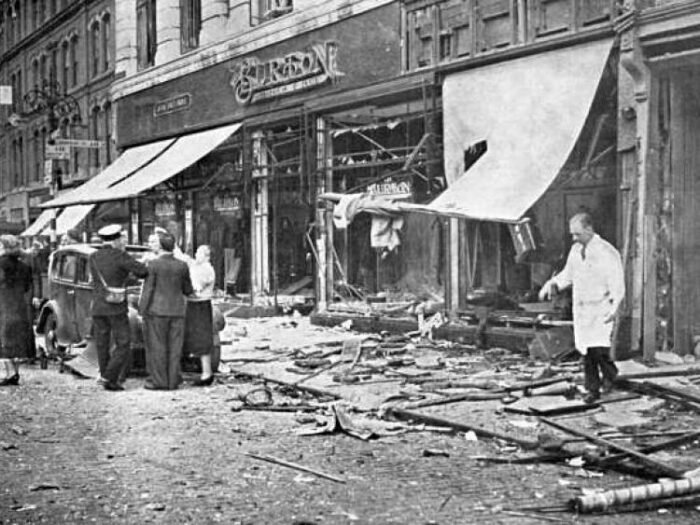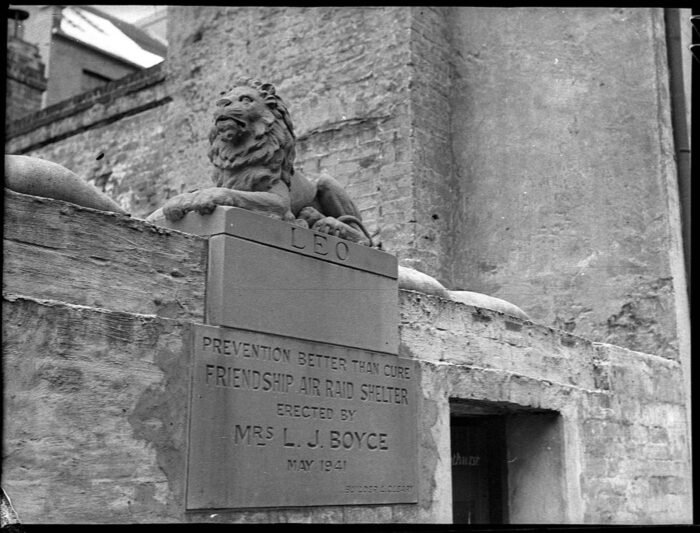
From Alan Allport's excellent new book, Britain at Bay 1938-1941, a couple of sentences about the IRA's 1939 bombing campaign which were guaranteed to catch my attention as imaginary air raids:
Some witnesses to the Broadgate bombing interviewed by the police were convinced that they had seen aircraft in the sky moments before the explosion, and that they had actually been attacked by the Luftwaffe. When, back in May, the IRA had set off a magnesium bomb in a Paramount cinema in Birmingham, there had been pandemonium inside the auditorium as members of the audience panicked, thinking that the long-dreaded German aerial Blitz had begun. 'Keep calm -- it's only the Irish again,' someone shouted to reassure the crowd (whether they added 'and carry on' is unknown).1
There's a little more detail available in the contemporary press about the first incident, which killed five people and injured seventy more in Broadgate, a major shopping street in Coventry, on 25 August 1939 (as shown above). The Birmingham Post reported that
There was chaos for a time after the Coventry explosion. A bomber aeroplane was passing over the centre of the city at the time, and the first thought of many people was that a surprise air attack had begun. This fear, indeed, led to an ugly scene. One of three men standing near a car was heard to say 'Let’s get away' or 'Let’s get out of this.' Some hearers jumped to the conclusion that the men were responsible for the explosion, and a threatening crowd began to collect. It was with difficulty that the police got the three men away to the police station, to be detained for a time for their own safety. The men’s credentials were found satisfactory, and they were afterwards released.2
The link between the three men and the belief that an air raid was under way is a bit cyrptic here, but is clearer in the Dundee Courier and Advertiser's account:
The men explained that they had been standing near their car when the explosion occurred. The eldest of the men, who was with his son and grandson, shouted, 'The war has started -- let's get away,' and ran to his car, whereupon the crowd shouted, 'Lynch them.'3
So the grandfather, at least, was one of those who believed that the knock-out blow from the air had arrived. This was just one week before the declaration of war on Germany. Britain was already beginning to move to a war footing -- the Emergency Powers (Defence) Act had received Royal Assent the day before -- and Coventry was an important heavy manufacturing centre, so you can see why the first thought might have been of a Luftwaffe bomb from the sky, rather than an IRA one on the ground. The surprise, perhaps, is that more people didn't make this assumption. At least some people seem to have understood that it was a terrorist attack, or else they wouldn't have made to grab the three men just for trying to flee the scene (this was in fact the seventh IRA bomb in Coventry since February, though by far the most damaging). Though it's also possible that the idea was the men were spies who had directed the supposed bomber to its target somehow. Or both, or neither: mobs aren't really known for their cool logic.
Image source: Leitrim Observer.





